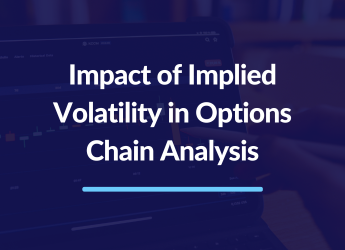Open Interest (OI) Analysis is a powerful tool traders use to gauge the current market sentiment and predict future market trends. It is the number of outstanding contracts in a particular futures or options market providing a clear indication of the level of buying and selling activity in the market. Let’s explore what Open Interest is, how it is calculated, and how does open interest help to identify market trends.
What is Open Interest Analysis?
The amount of active contracts in a specific futures or options market is called open interest. It represents the total number of traded contracts that an opposing transaction has not yet cancelled.
The Open Interest Analysis gives a quick picture of the number of active contracts and the market’s degree of buying and selling. For instance, when a trader purchases a futures contract, the market’s open interest rises. On the other hand, if a trader sells a futures contract, the Open Interest falls.
Explore more with Stolo Analysis & Charts for 20+ charts to analyse Nifty, BankNifty & all F&O.
How is Open Interest Calculated?
The total number of contracts purchased or the total number of contracts sold helps determine the open interest of an asset. The OI of the asset gets updated every time you complete a new trade. The Open Interest is a cumulative quantity. It builds over time and captures the net change in the number of outstanding contracts.
Why is Open Interest an Important Metric to Track?
Open Interest Analysis is a crucial gauge of market momentum as it sheds light on the market’s purchasing and selling activity. As opposed to a falling Open Interest, which indicates that more traders are leaving the market and selling futures contracts, a rising OI shows that more traders are entering the market and buying futures contracts. Traders and investors can identify whether the current trend is bullish or bearish and adjust their investment strategies by monitoring the change in Open Interest.
A larger open interest indicates a more active and liquid market, which can be a valuable indicator of the amount of liquidity in the derivatives market. It should be utilised in combination with other market indicators for a more thorough analysis, as Open Interest alone is insufficient to determine liquidity comprehensively.
How Open Interest Analysis Helps To Identify Market Trends?
Buying & Selling Activity
Open Interest displays the market’s net buying and selling activity. It could be a bullish indicator when the Open Interest is increasing because it shows that more traders are entering the market and purchasing futures contracts. On the other hand, when the OI is falling, more traders are leaving the market and selling their futures contracts, which can be a pessimistic indication.
Trading professionals can comprehensively understand the volume of buying and selling activity in the market and, as a result, make well-informed investment selections by monitoring the change in open interest.
Strength of a Market Trend
Open Interest analysis can also be used to identify the strength of a particular market trend. A rising OI in a bullish market trend indicates that the trend is strengthening, while a declining OI in a bearish market trend suggests the trend is weakening.
By tracking the change in OI, traders can determine if a market trend is becoming stronger or weaker and make investment decisions accordingly. For example, if the Open Interest is rising in a bullish market trend, it may indicate that the trend will continue to rise and that traders should hold onto their long positions. On the other hand, if the Open Interest is declining in a bearish market trend, it may indicate that the trend will continue to fall and that traders should close their long positions.
Identify Support and Resistance
Open Interest Analysis can provide information about support and resistance levels in the derivatives market, such as the options and futures market. Support and resistance levels refer to price points where the price of an asset is likely to experience difficulty moving higher or lower, respectively.
Changes in OI in the derivatives market can reveal market sentiment and the total supply and demand for an underlying asset. For instance, a quick increase in call option OI might mean that traders expect the value of the underlying asset to grow, which would put pressure on prices to climb.
Benefits of Open Interest (OI)
Enhanced Transparency
OI Charts aids in monitoring an asset’s liquidity and offers a glimpse into the intensity of market activity, enhancing transparency.
Market Direction Indicator
Open interest can be utilised as a leading indicator to identify the market’s direction. A rising OI indicates a bullish market, whereas a dropping OI indicates a bearish market.
To Determine PCR
The PC-Ratio is a technical indicator that measures the relationship between put options and call options of a specific underlying asset, such as a stock or an index. The total amount of unresolved or open derivatives contracts, such as options or futures, is known as Open Interest. Open interest can be used as a gauge of liquidity and market sentiment in the context of options trading.
The PCR can be determined by dividing the number of open put options by the total number of open call options. A high PCR indicates a bias towards put options, which are typically used for bearish market positions. In contrast, a low PCR indicates a bias towards call options, which are typically used for bullish market positions.
Monitor Market Volatility
Open interest charts is a useful tool for keeping an eye on the level of market volatility. It can reveal the presence of significant market buyers or sellers, such as institutional investors and hedge funds.
Risk Management
Open interest can be used as a tool for risk management. It is also used to determine the degree of exposure a trader or investor has in a specific market.
Conclusion
In conclusion, OI Analysis is a great tool to enhance your trading journey. Traders use open interest for price determination and asset fair value estimation. Open interests can aid in risk management by letting traders know how to identify market trends.


